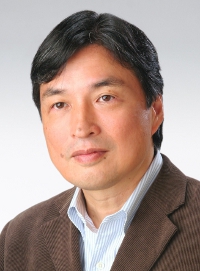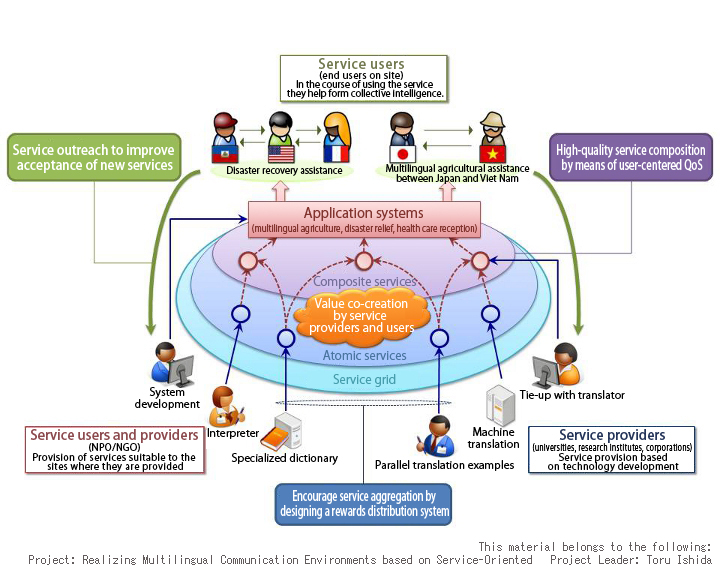Research Projects Selected in FY2011
< Solution-Oriented Service Science Research, Type A >
Realizing Multilingual Communication Environments based on Service-Oriented

[] Project Leader
Toru Ishida
Professor, Graduate School of Informatics, Kyoto University
[] Targets
This project will build a research platform based on service-oriented collective intelligence by realizing multilingual communication environments as demanded by people active in international venues.
- By using quality indicators from the user’s standpoint, realizing services meeting the quality demands in the service venue
- Theoretically calculating the contribution of individual services in composite services and distributing rewards to each service provider accordingly
- By predicting the behavior and satisfaction level of service users after introduction in the service venue, improving services to increase acceptance by the public
[] Approach
Setting specific issues for alleviating the language problems faced by people active in international venues, we will devise and verify a theoretical model of collaboration between service providers and service users, from the following three standpoints.
- How services can be combined
Since the language services demanded by service users in international venues are realized by combining multiple atomic services readied by the service provider (dictionary services, machine translation services, human interpreter services, etc.), the quality of the resulting composite service (QoS) becomes an issue. Moreover, with language services the assessment of service quality is dependent on the service user and usage context; for example, someone with scant English ability would find a service in English of little use. By introducing the concept of “user-centered QoS,” we will assess quality based on the service user and usage context and put together services meeting the quality demands in the service venue.
- How to encourage service development
Universities, research institutes, corporations, non-profit organizations and other service providers contribute to the formation of collective intelligence by developing and providing atomic services. When collective intelligence is formed by collaboration among a variety of service providers in this way, it is necessary to calculate the contribution of each atomic service to the composite service and distribute rewards suitably to the atomic service providers. For example, in the case of a specialized translation service combining a commercial machine translation service with a dictionary service created by a non-profit organization, the compensation must be divided suitably between the corporation and non-profit organization. In addressing this issue, we will introduce an economic model including a “volunteer economy” concept and attempt to distribute rewards by theoretically calculating the contribution of each service.
- How to introduce services
People active on international venues make use of the composite services created by combining atomic services developed in universities, research institutes, and corporations. When those language services include new technologies, their acceptance by the public often becomes a problem. We will attempt to use game theory to predict the behavior and satisfaction level of users after the introduction of composite services. It should then become possible to convey to the service providers prior to the start of service the kinds of issues service users are likely to face. We will attempt to establish methodology for this, known as service outreach.





